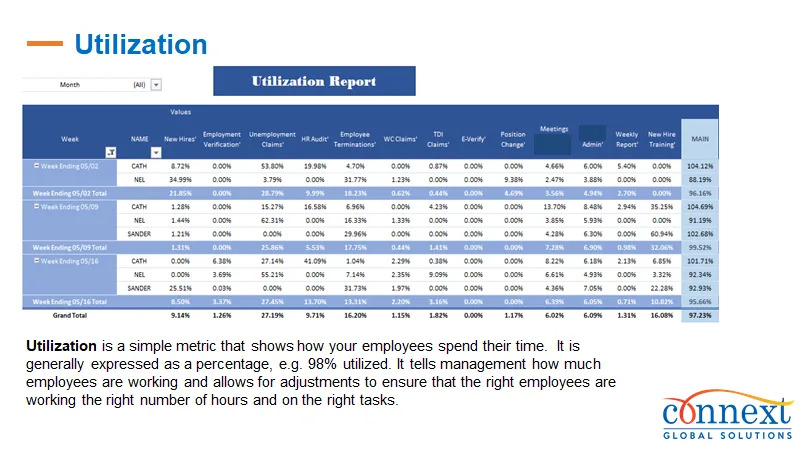As globalization evolves and digital transformation accelerates, a crucial shift in international trade is underway: the rise of tariffs on services. While traditional trade discussions often focus on physical goods — steel, agriculture, and electronics — the growing dominance of services in global trade demands a closer look.
According to the World Trade Organization, services have become a key driver in shaping the economic landscape across countries, regardless of their level of development. Representing the largest portion of global economic activity, services contribute over two-thirds of GDP, employ the largest share of the workforce, and are the primary source of new job creation, particularly for women and young workers.
The WTO adds that subsectors like logistics, finance, and information and communication technologies (ICT) are vital to the operation of modern economies. As the service sector continues to expand, understanding how tariffs on services are structured and their impact on global trade becomes increasingly important for businesses, governments, and consumers alike.
But how exactly do service trade barriers work? And what implications do they have for businesses, consumers, and governments?
What Are Tariffs on Services?
Unlike tariffs on goods — which are typically import taxes — service trade barriers often manifest as:
- Licensing requirements
- Local data storage mandates
- Restrictions on foreign ownership
- Visa/work permit regulations
- Cross-border data flow restrictions
- Discriminatory pricing or taxation
These regulatory hurdles increase the cost or reduce the viability of foreign service providers operating in a given market.
These regulatory hurdles increase the cost or reduce the viability of foreign service providers operating in a given market. For example, cross-border data flow regulations may hinder customer support outsourcing or data analytics services — two areas critical for global business process outsourcing (BPO) providers.
Why Are Services Targeted?
There are several macroeconomic and strategic reasons for the growing regulation of service trade:
- Economic Dominance: In advanced economies like the U.S. and the EU, services contribute over 70% of GDP.
- Digital Transformation: Governments view digital services — including fintech, AI, and cloud Infrastructure — as strategic assets.
- Revenue Generation: Many countries are introducing digital services taxes (DSTs) to capture revenue from global tech platforms without a physical presence.
The rise of digital sovereignty policies has led to fragmented compliance requirements, forcing multinational firms to rethink their global service delivery models.
Key Sectors Affected by Service Trade Barriers
Information Technology & BPO
Global IT services and outsourcing firms face increasing restrictions, including local data residency laws and cybersecurity certifications. These barriers can resemble retaliatory tariffs aimed at protecting domestic industries from foreign competitors, such as when foreign governments impose import tariffs on digital services or additional tariffs on tech products.
Financial Services
Foreign banks and insurers are often required to establish local entities and adhere to strict capital adequacy and reporting standards, akin to the effects of tariffs on steel or aluminum imports which aim to shield domestic producers.
Telemedicine & Online Education
Virtual healthcare providers must comply with country-specific licensing, patient data privacy laws (e.g., HIPAA), and accreditation. These barriers can be seen as part of broader industrial policies that aim to protect domestic service providers.
Streaming & Media Services
Content platforms face local content quotas, censorship laws, and digital advertising restrictions, especially in emerging markets, much like the impact of reciprocal tariffs on industries seeking to access foreign markets.
A Geopolitical Battleground: The U.S., China, and the EU
Governments are increasingly using digital regulations as trade tools:
- U.S.: Pressures trading partners on digital services taxes (DSTs) that disproportionately affect American tech giants.
- China: Enforces strict data localization and cybersecurity laws limiting access to foreign cloud providers and financial services, citing data security and sovereignty.
- EU: Implements comprehensive rules like the General Data Protection Regulation (GDPR) affecting data flow and service delivery from non-EU companies.
These differing regulatory regimes complicate cross-border service operations and introduce regulatory risk, impacting the market share of foreign firms and increasing the effective tariff rate for services.
The Role of Trade Agreements in Service Liberalization
Modern trade agreements increasingly include provisions on services liberalization:
- General Agreement on Trade in Services (GATS) – WTO framework covering services trade.
What This Means for Global Businesses
Companies that export or outsource services— particularly in tech, finance, and customer support — must now navigate:
- Regulatory compliance in each market
- Data governance and cybersecurity
- Cloud architecture adaptation
- Operational agility under trade tensions
Taylor Goucher, Vice President of Sales and Marketing at Connext, underscores how regulatory complexity is reshaping global service delivery strategies:
“As regulatory environments grow more complex, global companies need more than just awareness — they need a partner who understands how to navigate and adapt. At Connext, we empower our clients to stay compliant while unlocking new opportunities across markets.”
Enterprises in BPO, IT services, finance, and customer support must treat compliance management and digital infrastructure localization as strategic priorities.
Whether you’re adapting your service delivery model for new markets or mitigating the impact of digital trade restrictions, Connext provides the operational agility, legal awareness, and localization strategies global businesses need to stay competitive. Get in touch for an assessment of your needs, transparent pricing, and proposed action plan.
Conclusion: The Future of Services in Global Trade
Tariffs and non-tariff barriers on services are not just the future of global trade — they’re the present. As the world becomes increasingly digital, regulatory frameworks will evolve, adding new layers of complexity to cross-border operations. Universal tariffs, additional tariffs, and separate tariffs will continue to shape the landscape.
To stay competitive and compliant, businesses need proactive trade intelligence, cross-border legal expertise, and robust digital strategies tailored to diverse regulatory landscapes.
With Connext as your partner, you gain access to tech-enabled BPO solutions designed to help you scale smarter, stay ahead of regulatory change, and unlock new markets with confidence. Contact us to learn more.
FAQs about Tariffs on Services
Tariffs on services are trade barriers that increase the cost or restrict the viability of foreign service providers operating in a given market. These can take the form of licensing requirements, local data storage mandates, restrictions on foreign ownership, and visa/work permit regulations.
The rise in tariffs on services is driven by digital transformation and economic dominance in service-heavy economies. Governments are leveraging these tariffs as tools to protect local markets and capture revenue, particularly through digital services taxes (DSTs) and digital sovereignty policies.
Businesses involved in global business process outsourcing (BPO), IT outsourcing, and other service sectors face increasing challenges in compliance with data governance, cybersecurity certifications, and cloud architecture adaptation due to tariffs. These regulations can complicate cross-border operations and introduce new operational risks.
Key sectors impacted by service trade barriers include information technology and BPO, financial services, telemedicine, online education, and media services. These industries often face complex regulations, such as data residency laws and cross-border data flow restrictions.
Businesses can stay compliant by focusing on regulatory compliance and adapting their service delivery models to meet the evolving requirements of each market. Partnering with companies like Connext, which provides tech-enabled BPO solutions, can help ensure that businesses remain ahead of regulatory changes while maintaining operational agility.
Digital sovereignty refers to countries’ efforts to control their digital infrastructure and data. These efforts result in regulations like data localization and strict compliance requirements that can increase costs for global service providers.









